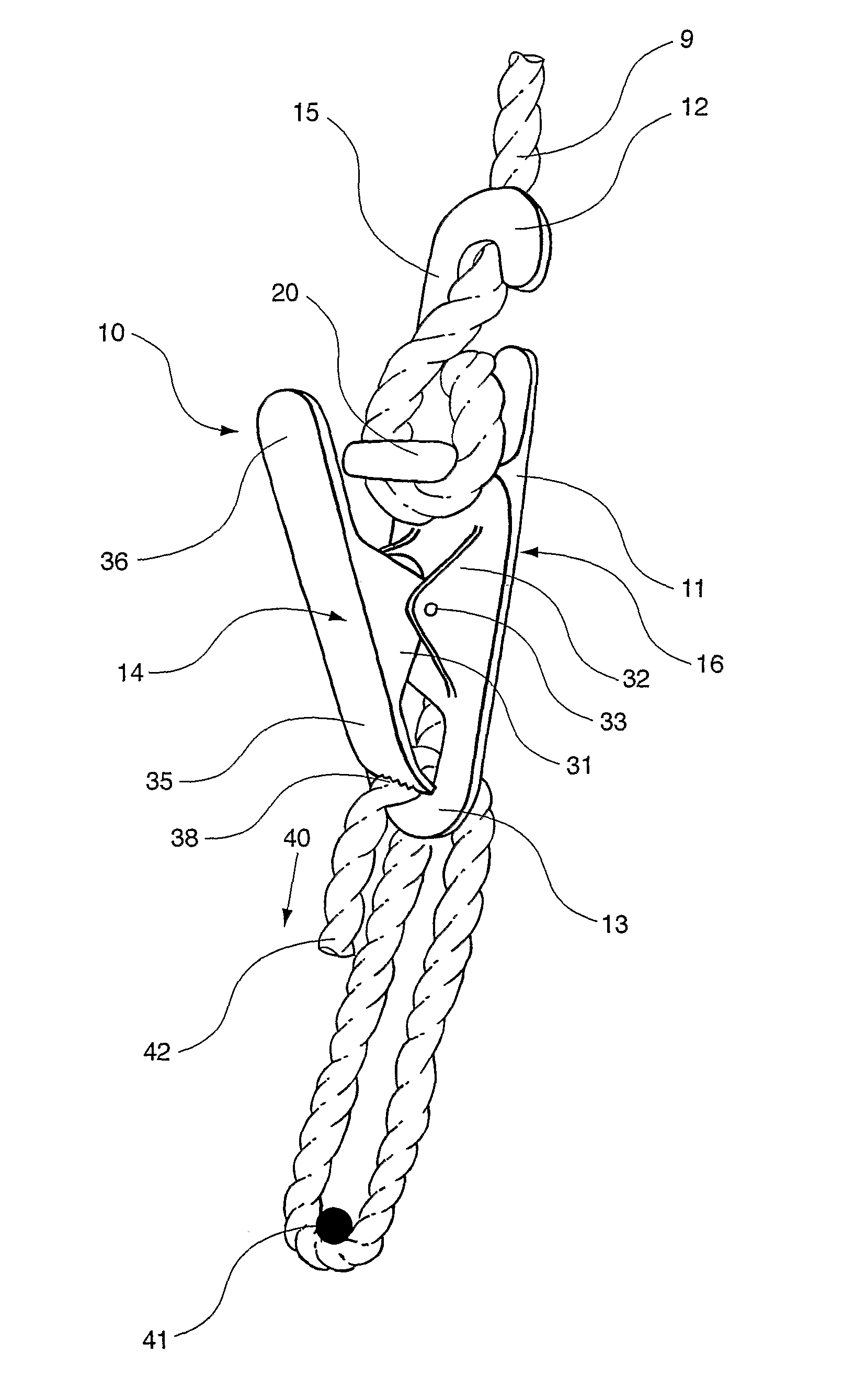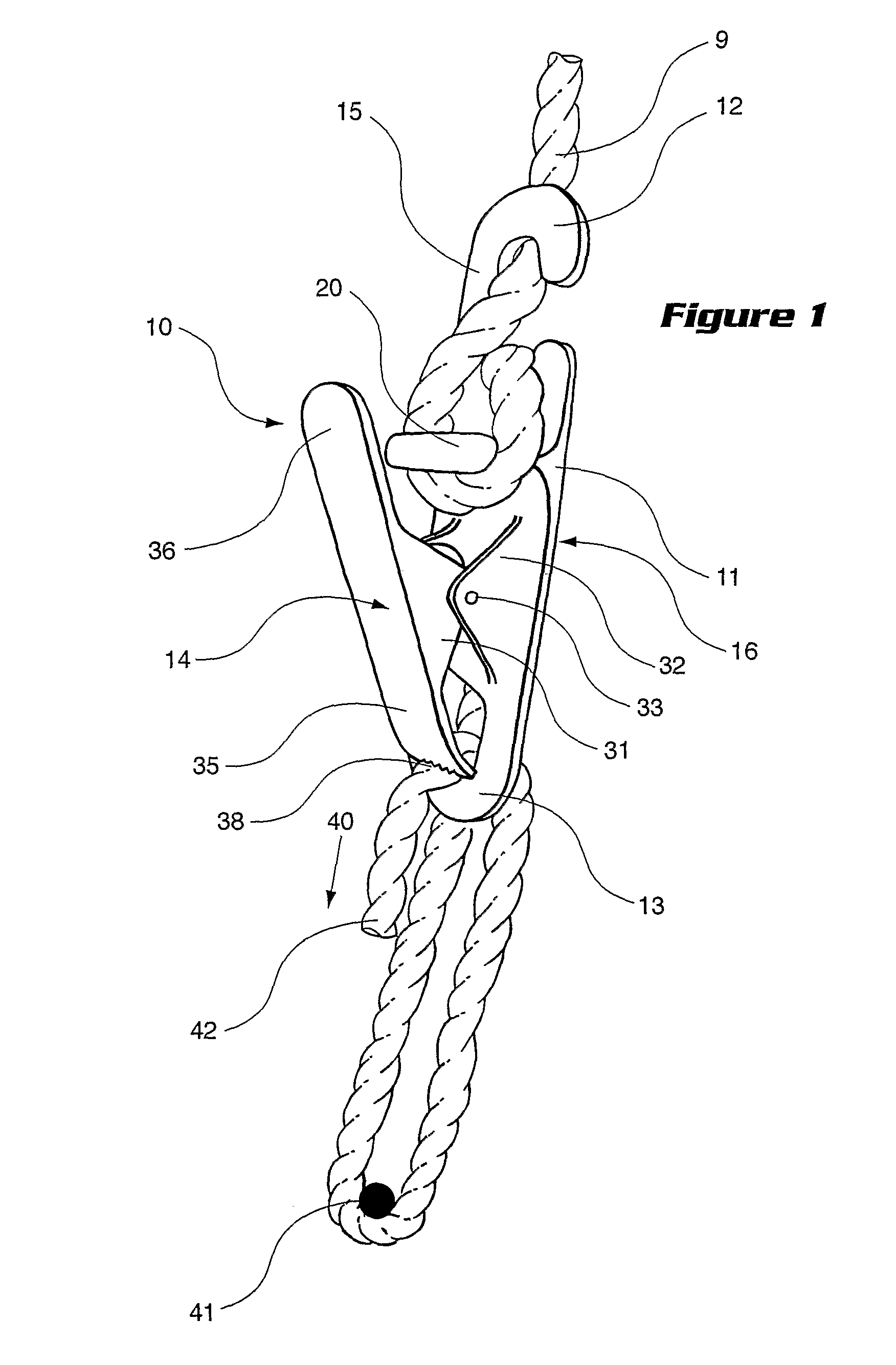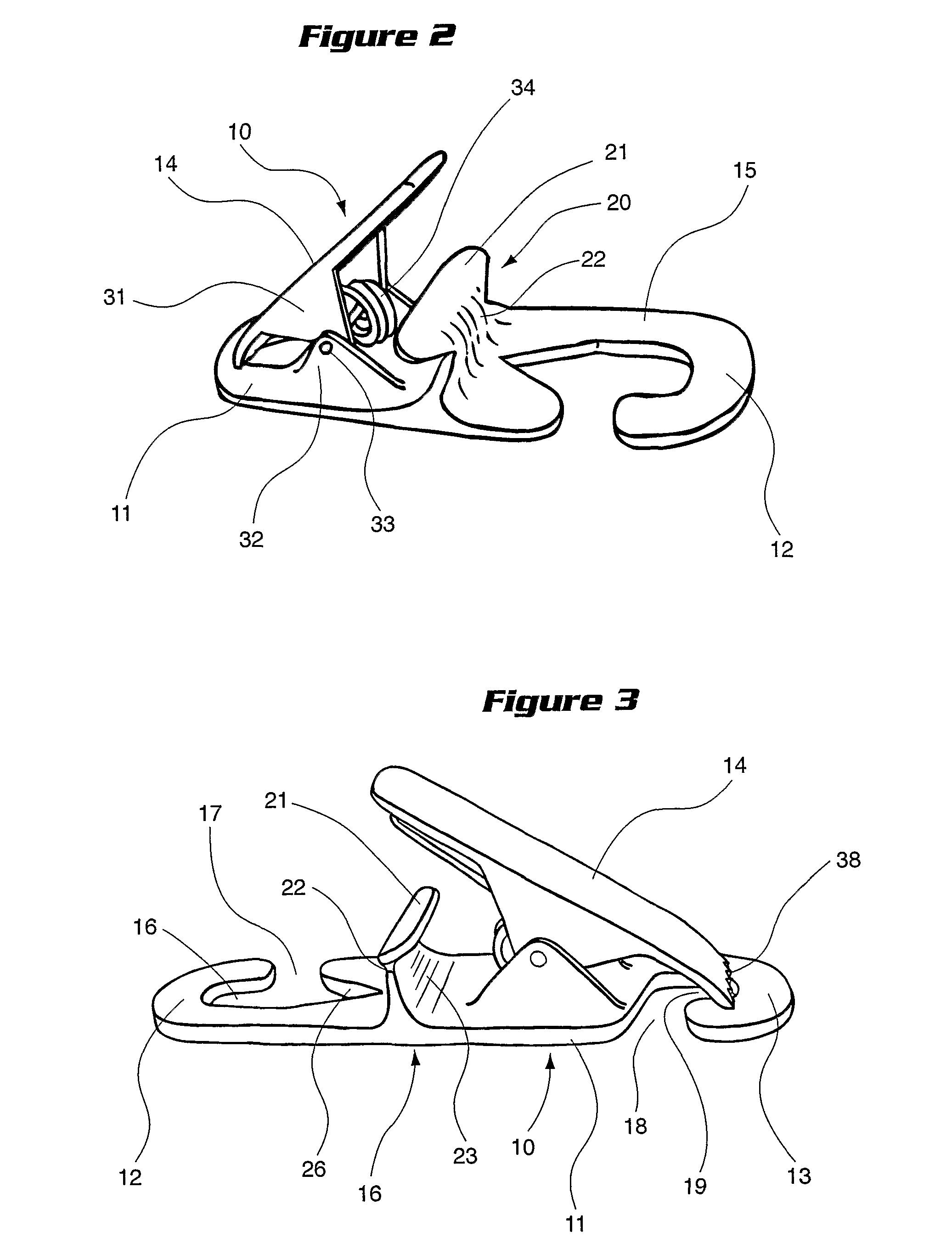Rope tensioning device
a tensioning device and rope technology, applied in the field of rope tensioning devices, can solve the problems of time-consuming, difficult to teach, and complicated knots used by those with experience, and achieve the effects of reducing the risk of failure if not properly tied, reducing the risk of failure, and reducing the time required to tie knots
- Summary
- Abstract
- Description
- Claims
- Application Information
AI Technical Summary
Benefits of technology
Problems solved by technology
Method used
Image
Examples
first embodiment
[0134]The first embodiment, illustrated in FIGS. 1 to 3 and 6, comprises an anchoring means in the form a peg 20 located between the first hook end 12 and the lever arm 14. The peg 20 projects outwardly from the front face 15 and includes a head 21 and a throat 22. Rope is adapted to be wrapped around the peg 20, and specifically the throat 22, to hold the rope to the device 10 in a secure manner. Head 21, being larger than the throat 22, ensures the rope is captured between the head 21 and front face 15 thereby preventing escape.
[0135]To further improve the effectiveness of the peg 20 to restrain a loop of rope, the head 21 of the peg 20 is angled away from the first hooked end 12 and creates a concave face 23 against which the rope loop is held.
[0136]The hooks at the hooked ends face opposite directions.
second embodiment
[0137]FIGS. 4 to 6 illustrate the anchoring means in the form of a notch 25. The device's hold on the rope is increased by creating a loop by winding rope around notch 25 and the base of first hooked end 12, which is provided with a V-shaped wedge 26. This prevents the rope sliding out of the hooked end. The notch 25 slants in a parallel direction to the slanting Vshaped wedge 26 to also create a wedge 27 in notch 25 preventing escape of the looped rope from the notch.
[0138]Both embodiments are provided with a V-shaped wedge 26 at the first hooked end 12 for capturing the rope inserted into the device.
[0139]In the second embodiments the hooks are facing the same direction.
[0140]The gripping lever arm 14 is pivotably mounted to the front face 15 at approximately mid length of the arm 14. Two downward flanges 31 on the lever arm 14 align in between two upward flanges 32 on the front face 15. A pin 33 extends through all four flanges to provide a pivoting motion of the lever arm 14 rel...
PUM
 Login to View More
Login to View More Abstract
Description
Claims
Application Information
 Login to View More
Login to View More - R&D
- Intellectual Property
- Life Sciences
- Materials
- Tech Scout
- Unparalleled Data Quality
- Higher Quality Content
- 60% Fewer Hallucinations
Browse by: Latest US Patents, China's latest patents, Technical Efficacy Thesaurus, Application Domain, Technology Topic, Popular Technical Reports.
© 2025 PatSnap. All rights reserved.Legal|Privacy policy|Modern Slavery Act Transparency Statement|Sitemap|About US| Contact US: help@patsnap.com



